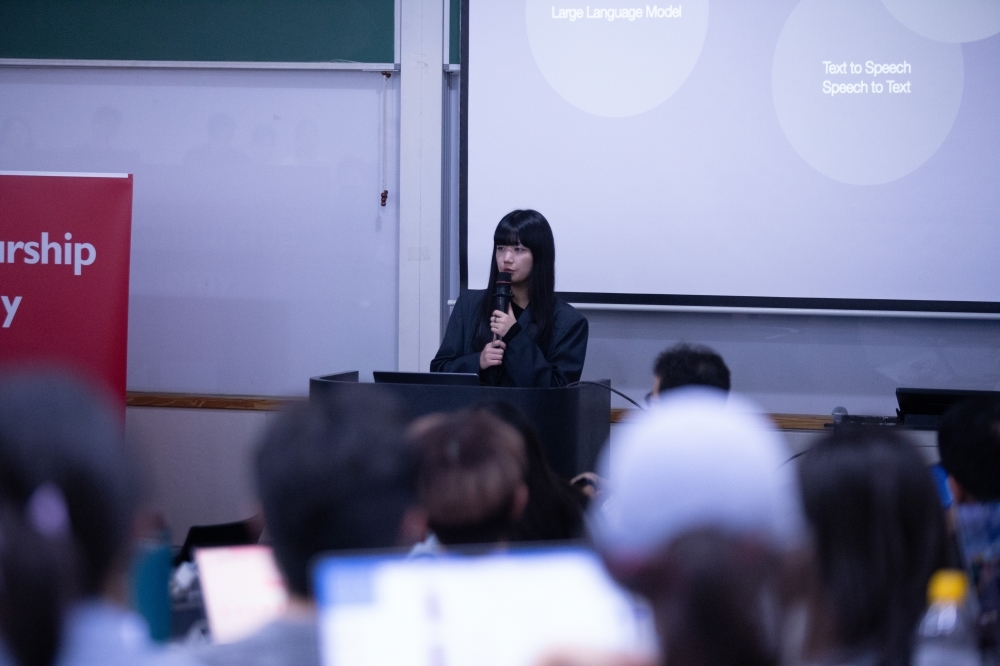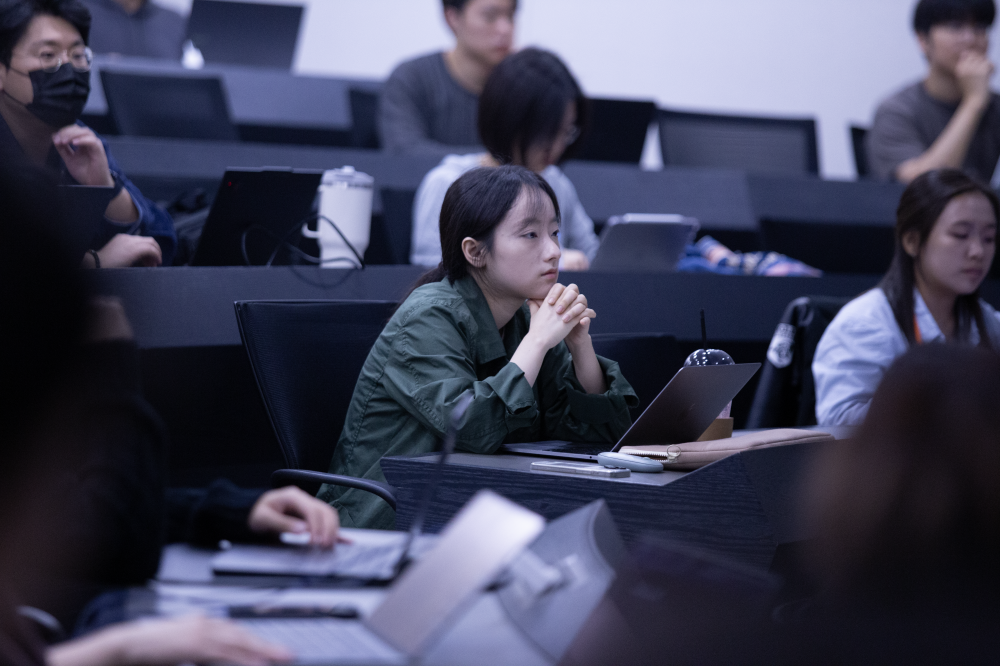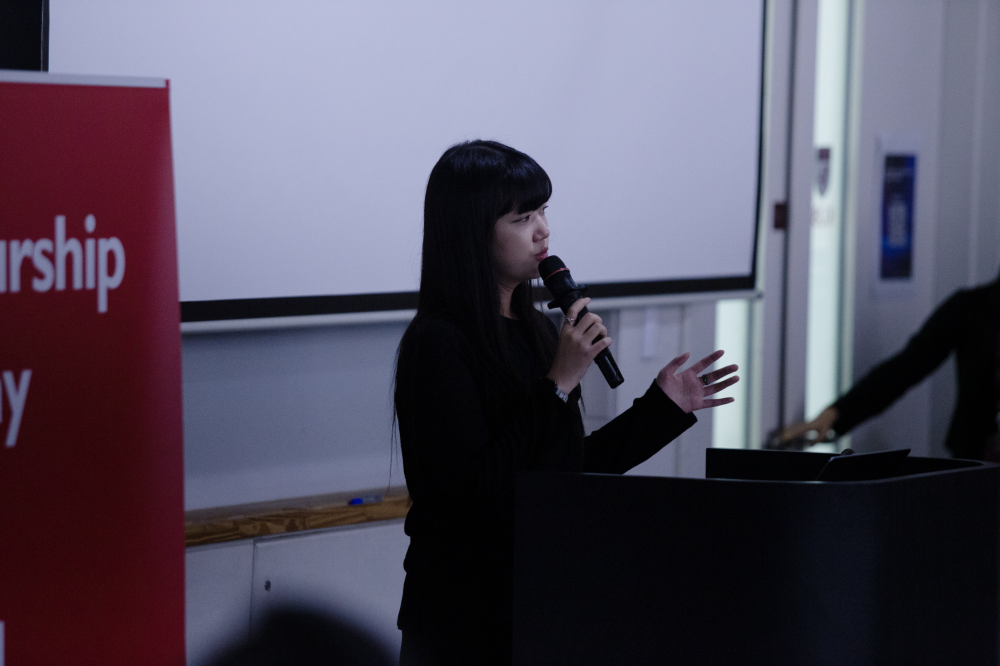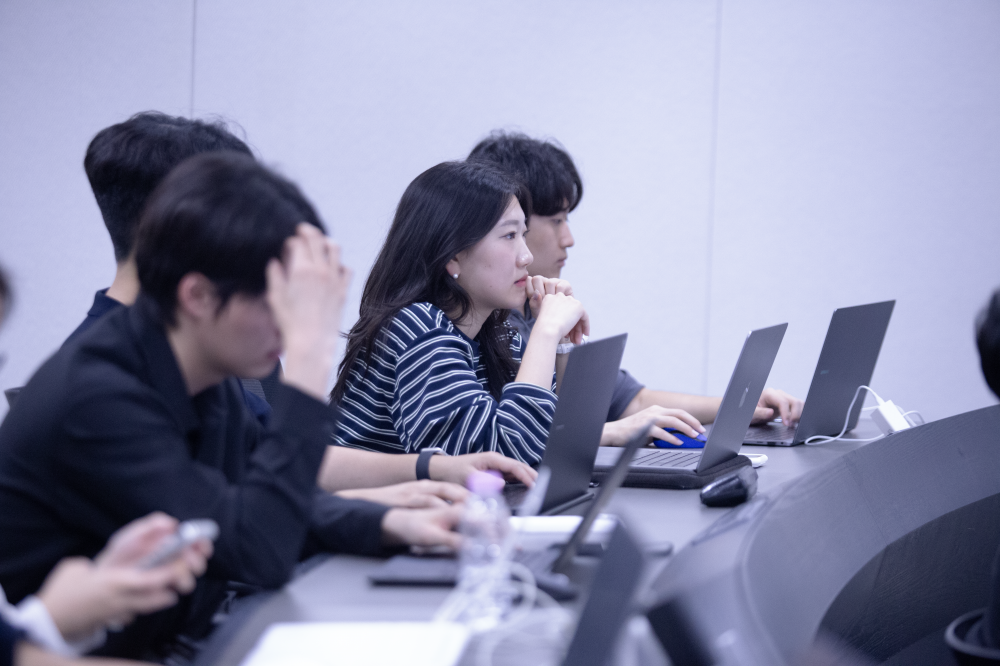News
KUBS News
Practical Insights from a Prompt Designer in the Age of AI

The Lecture on Demand of the Entrepreneurship Academy, hosted by the Startup Research Institute at Korea University Business School, was held on Tuesday, September 30, in Room B307 (Kolon Lecture Room) of the Hyundai Motor Hall. In this special session, Sungjoo Lim, a prompt designer at Plus X, delivered a lecture titled “AI Prompt Design Used in Practice: From Understanding Concepts to Application.”
Plus X is a brand consulting firm known for its work in branding and logo design for clients such as PLEDIS, Musinsa, Channel A, 29CM, CU, and BTS. Designer Lim previously planned and produced popular AI-based content including “AI Profile” and “AI Yearbook” during his internship as an AI content designer at SNOW. He is currently leading diverse projects at Plus X, such as corporate AI design workshops, AI tool development, marketing campaign image generation, and the operation of in-house AI models.

Principles of Generative AI and Image-Centered Practice
The lecture focused on image generation. Designer Lim explained, “Most generative AI models are based on diffusion models, which create images by generating noise and then reconstructing it.” He added that this process is combined with captioning technology — which interprets and describes image content through natural-language keywords — and that recently, tools such as ChatGPT, Nano Banana, and Flux Context have made command-based image generation and editing far more accessible.
During the hands-on session, participants used user-friendly image generation tools such as Midjourney and Florafauna. Students analyzed and experimented with prompts directly on the Midjourney platform and learned the importance of entering aspect-ratio parameters. Lim noted, “If no specific ratio is set, the AI generates a default square image with a 1:1 ratio, so parameter input is essential to achieve the desired composition.” He added, “Since AI is trained not to crop objects, even with the same prompt, the subject’s posture or camera angle can vary depending on the ratio.” Students adjusted aspect ratios, generated their own images, and actively shared and discussed their results in an open chatroom.

AI Innovation Cases in the Workplace
Finally, Lim introduced examples of how these AI functions are applied in real-world branding projects. The first case involved creating key visual images for three new products from Osulloc. He demonstrated the visual process of producing tea-themed images using natural ingredients such as chestnuts and figs, and analyzed how the sensitivity and level of detail in AI-generated results can differ across model versions — emphasizing that newer models tend to deliver greater expressiveness and refinement.
The second example highlighted an internal project at Plus X for managing content on T Universe, SK Telecom’s subscription marketplace service. To streamline the process of modifying platform icons and text, the team developed a feature that enables logos to be converted into 3D and rotated simply through keyword input and minimal user interaction. This innovation reduced a process that previously took more than two days to just ten minutes using AI-driven automated conversion, earning an enthusiastic response from students.

Balance Between AI and Design, and Copyright Discussion
Lim remarked, “Effective prompt writing begins with understanding how AI learns and the characteristics of its training data,” adding, “To achieve the desired quality, commands should be written in the language the AI has learned and requests made within the scope of its training.”
During the Q&A session, students raised questions about the balance between AI and traditional design practices. One student asked, “Is AI-driven work recognized in real-world practice?” Lim responded, “Except in cases where images are sold directly, AI is often viewed positively for its productivity benefits. What matters is not whether AI is used, but whether the outcome maintains the expected quality.”
Addressing copyright issues, he noted, “As far as I know, Midjourney is currently facing a lawsuit from Disney,” and added, “Although there hasn’t been a definitive ruling, some companies are purchasing AI models themselves to mitigate legal risks.” Even after the session ended, students continued to ask follow-up questions and engaged in active discussions with Lim.
Meanwhile, the Lecture on Demand series hosted by the Startup Research Institute has been held twice so far, recording high levels of participation and satisfaction. A total of five additional lectures are scheduled for this year, featuring speakers such as Juhyung Lee, CEO of Kong Ventures; Minjung Seo, Art Director; and Dongwook Kim, CEO of Wisely.


